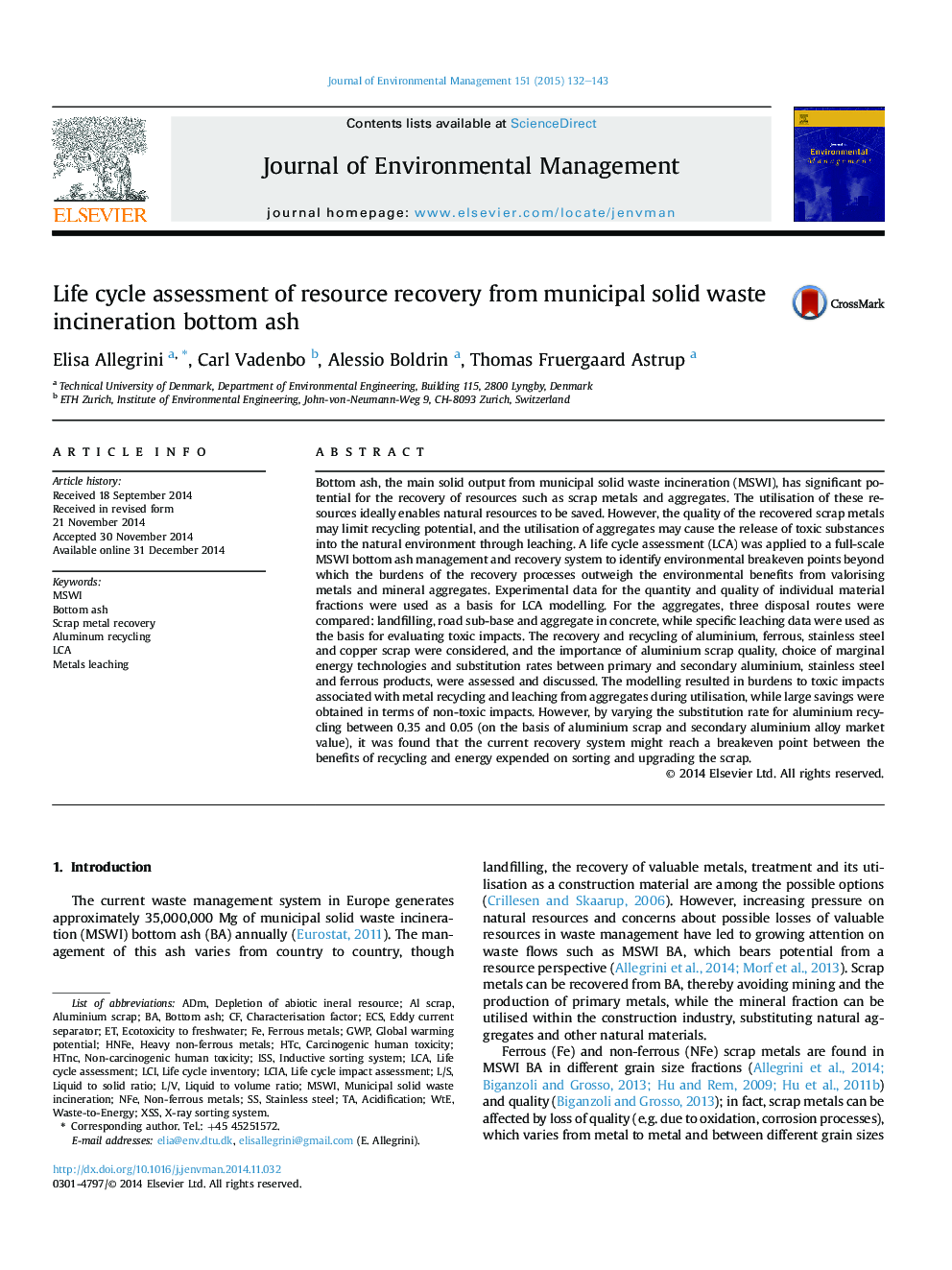| Article ID | Journal | Published Year | Pages | File Type |
|---|---|---|---|---|
| 7482727 | Journal of Environmental Management | 2015 | 12 Pages |
Abstract
Bottom ash, the main solid output from municipal solid waste incineration (MSWI), has significant potential for the recovery of resources such as scrap metals and aggregates. The utilisation of these resources ideally enables natural resources to be saved. However, the quality of the recovered scrap metals may limit recycling potential, and the utilisation of aggregates may cause the release of toxic substances into the natural environment through leaching. A life cycle assessment (LCA) was applied to a full-scale MSWI bottom ash management and recovery system to identify environmental breakeven points beyond which the burdens of the recovery processes outweigh the environmental benefits from valorising metals and mineral aggregates. Experimental data for the quantity and quality of individual material fractions were used as a basis for LCA modelling. For the aggregates, three disposal routes were compared: landfilling, road sub-base and aggregate in concrete, while specific leaching data were used as the basis for evaluating toxic impacts. The recovery and recycling of aluminium, ferrous, stainless steel and copper scrap were considered, and the importance of aluminium scrap quality, choice of marginal energy technologies and substitution rates between primary and secondary aluminium, stainless steel and ferrous products, were assessed and discussed. The modelling resulted in burdens to toxic impacts associated with metal recycling and leaching from aggregates during utilisation, while large savings were obtained in terms of non-toxic impacts. However, by varying the substitution rate for aluminium recycling between 0.35 and 0.05 (on the basis of aluminium scrap and secondary aluminium alloy market value), it was found that the current recovery system might reach a breakeven point between the benefits of recycling and energy expended on sorting and upgrading the scrap.
Keywords
NFECharacterisation factorXSSGWPLCIAMSWIWTEADMHTCLCIISSWaste-to-energyECsL/SLife cycle impact assessmentLCALife Cycle AssessmentAcidificationAluminum recyclingBottom ashMunicipal solid waste incinerationFerrous metalsNon-ferrous metalsStainless steelLife Cycle InventoryLiquid to solid ratioglobal warming potential
Related Topics
Physical Sciences and Engineering
Energy
Renewable Energy, Sustainability and the Environment
Authors
Elisa Allegrini, Carl Vadenbo, Alessio Boldrin, Thomas Fruergaard Astrup,
